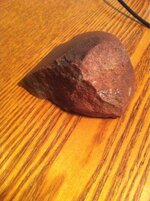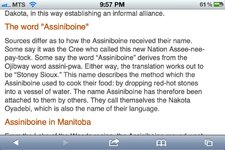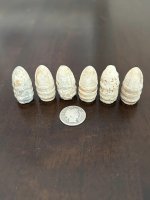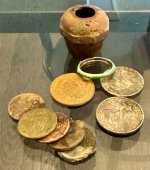old digger
Gold Member
- Jan 15, 2012
- 7,502
- 7,298
- Detector(s) used
- White's MXT
- Primary Interest:
- All Treasure Hunting
Out here in the northern plains a sure sign of a prehistoric camp site is ''Fire rock''. The rocks are always river cobbles that are orange to red in color, and are usually scattered in a small area. You can find these ''fire rock'' sometimes miles from the nearest river source where they were collected.
My understanding is that these rocks were heated up first in the fire and then were put with the food that was to be eaten. Literally the opposite the way we normally cook these days. In other words you would put the fire on your food.
Other sites, these ''fire rock'' were used in a sweat-lodge ceremony.
At this time I only have one example of one of these rocks, but you can see that these rocks were heated quite hot and are still red.
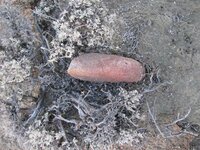
My understanding is that these rocks were heated up first in the fire and then were put with the food that was to be eaten. Literally the opposite the way we normally cook these days. In other words you would put the fire on your food.
Other sites, these ''fire rock'' were used in a sweat-lodge ceremony.
At this time I only have one example of one of these rocks, but you can see that these rocks were heated quite hot and are still red.

Upvote
0



